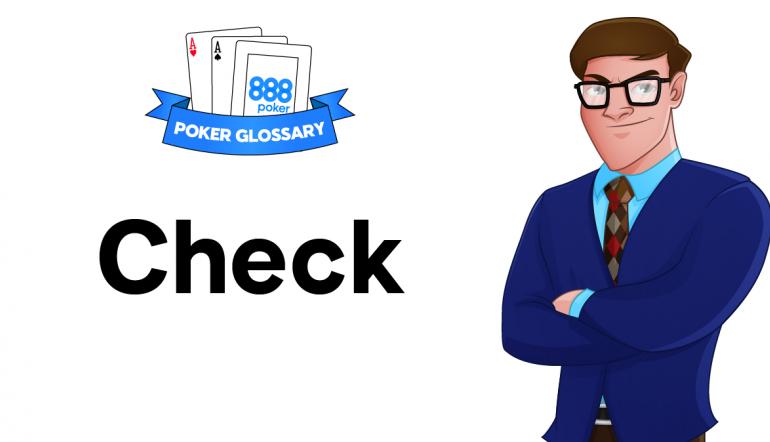In the last Sit N Go article I discussed the role of ICM in SNG strategy. Another key part of SNG strategy as the tourney moves on into the middle and late stages is the Push/Fold Game.

What is the Push/Fold Game?
When Should I Fold In Poker
- The Push Fold App is a great tool to study short stack situations where you have less than 12 big blinds and you need to decide whether to shove all in, fold, or call an all in. If you want to challenge yourself, use the Push / Fold Quiz to see how good you are at knowing when to shove all in and when to fold.
- If your stack size is less than 30 BBs, calling pre-flop should almost be eliminated from your repertoire. You don't want to risk 10 percent - or more - of your stack playing a hand where.
- If you instead decide to check, you are deferring your betting rights for the time being. Another player may now bet, in which case you may fold your hand, call the bet or raise (the action of first checking and then raising when an opponent bets is known as a check-raise).
- Calling is a measured response to a bet in poker. Another player has laid down money, and instead of folding or raising, you simply call to go along with their bet amount. Calling can be the right action to take in online poker tournaments because you’re drawing to a big hand and the pot odds favor a call. It can also be correct to call when your read on your opponent is that they’re over aggressive.
Starting Hands: The Main groups. With our handy chart you can see what hands to raise, call, and fold with depending on your position. The range of hands will differ depending on how many players.
Push/fold strategy boils down to limiting your choices to either pushing all-in or folding your hand. This allows for maximum fold equity to pick-up the blinds and antes and makes it so you don’t commit some valuable chips pre-flop but then fold to post-flop pressure. You also get the added benefit of nice double-ups when your opp’s call you with inferior hands.
When to start the Push/Fold Game
The push/fold game starts once you reach the 50/100 and the 75/150 levels. Here, the 1,500 starting stack is only 10-15bb’s, and this is where many SNG players start their push/fold game. Everything you’ve learned up to this point has been geared to get you to this profitable spot. It’s profitable because your opponents call shoves too wide or don’t shove wide enough to pick-up the super important blinds and antes.
Pay attention to all showdowns and take note on your opponents regarding when they start their push/fold game and what they push with. Some begin early at sub-15bb’s. Others start super late at 7bb’s, and some never do it. Noting when they tend to push/fold will alert you to any changes in behavior, which could indicate hand strength. If you know that “9bb Norman” always pushes at 9bb’s or less, but suddenly at 7bb’s he min-opens, there’s a chance he’s got a nut hand and wants action. You can play him accordingly and give his unusual play the respect it deserves and fold out all but the best pre-flop hands.
(Of course, smart players can use this against you, so make note if you ever catch someone using a reverse tell like this.)
Why Use the Push/Fold Strategy
This is all about maximizing fold equity. When the blinds/antes are a big portion of your stack, you’ve got to do all you can to collect them.
If you’ve got a 1,500 chip starting stack, the 6 max blinds and antes at the 50/100 level could be 210 chips and collecting these adds 14% to your stack. At the 75/150 level? This would add up to 315 chips or 21% to your stack. Either of these are significant equity gains to your stack.
Pushing all-in maximizes your fold equity as only the strongest hands (or weakest players) will call for a big part of their stack, so we’ll be folding out most hands that would contend with a smaller raise of 2-3bb’s.
Another benefit of pushing all-in instead of making a smaller opening raise is that it doesn’t give our opponent the chance to re-raise all-in to put the pressure back on us. By shoving, we’ve put max pressure on our opponents and now the “ball’s in their court” as the saying goes.
Push/Fold Considerations
Your Hand
- The stronger your hand, the less fold equity you need; the weaker your hand the more you need.
- Try not to change your plays based on the strength of your hand. Like mentioned previously, perceptive opponents will notice when you deviate from your normal strategy and can change their plays based on your unusual actions.

Opponent Tendencies
- How likely will he fold? HUD stats and notes on opponents will tell you if he’s 90% likely to fold or only 70%.
- Against tight players (TAG’s and NIT’s) open up your range as much as possible
- Against loose callers (LAG’s, Fish and Donks) push a range that’s more value intensive (Aces are good for this as they’re less likely to have one if you do)
- Choose who you shove against wisely. Don’t jam wide vs wide callers.
Stack Sizes
- Pay attention to the stack sizes of those remaining in the SNG
- Big stacks call wider vs short-stacked shoves; fish call wider as well
- The bigger your stack in relation to theirs, the more pressure your shove puts on them
- Short stacks are much more likely to call than big stacks. They have lots to gain with the blinds/antes along with your bet, so they’ll call very wide.
- You have lots of fold equity vs similar sized stacks
- As a big stack put pressure on the medium sized stacks, especially when there’s a short stack or two in play near the bubble
- As a medium stack with a short stack or two in play, be more judicious in your choices to push all-in as you need to outlast these shorties.
Number of Players Remaining
- Players are less likely to call when on the bubble (OTB) because of the pressure of outlasting opponents to get into the money
- Jam wider OTB to build a big stack
- Make reads and take note of how your opponents play the bubble and just before the bubble
- Be careful that you know your opp’s and are making notes and reads to help you decide whether or not to shove.
Learning From Your Push/Fold Opportunities
As an SNG player, you’ll encounter the bubble and push/fold situations more times than you can shake a stick at.
As you play, tag hands where you have a push/fold decision and analyze them later in your HH review sessions. Use an ICM calculator (like ICMIZER or SNG EGT as discussed in the Middle-Stage SNG post). As you assign ranges to your opponents, make their ranges a little tighter when calculating their all-in shoves and wider when calculating their calling ranges. Being a bit more conservative on both fronts will slightly tighten you up, making your all-in ranges stronger.
The more you study these push/fold spots, the better innate understanding you’ll have of them which will help with profitable in-game decisions.
Push/Fold Charts

I mention using Push/Fold charts in the SNG Middle-Stage article, so please check that out, but I’ll make a quick mention of it here.
When To Call And Fold In Poker Machine
I used them in the past, but I found them to be a crutch and I would follow them overly-strictly and not even rely on opponent reads or the current game dynamic. I do recommend trying them, though, as many SNG players swear by them. Google “push fold charts” and try some for yourself.

When To Call And Fold In Poker Room
Practice, Practice, Practice
All In Or Fold Poker
The Push/Fold game isn’t something that anybody gets right off the bat. It takes time on and off the felt to work on this part of your game. Drop in stakes if you have to in order to get comfortable with shoving at around 10bb’s if you don’t yet do this. Tag hands and analyze them later, take notes on what you’ve learned, and put these into play in your next session.
When To Call And Fold In Poker Tournaments
Until next time, study smart, play much and make your next session the best one yet!
When To Call And Fold In Poker Lingo
- Smart Poker Study Audiobook Excerpts - March 4, 2021
- I Am Your Poker Coach - February 16, 2021
- Counting Outs and Making Profitable Calls - February 4, 2021